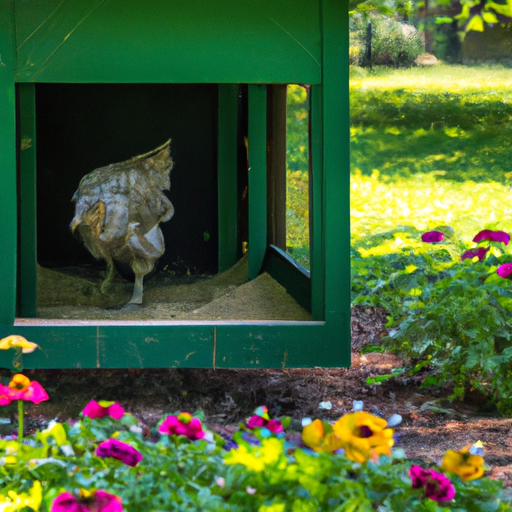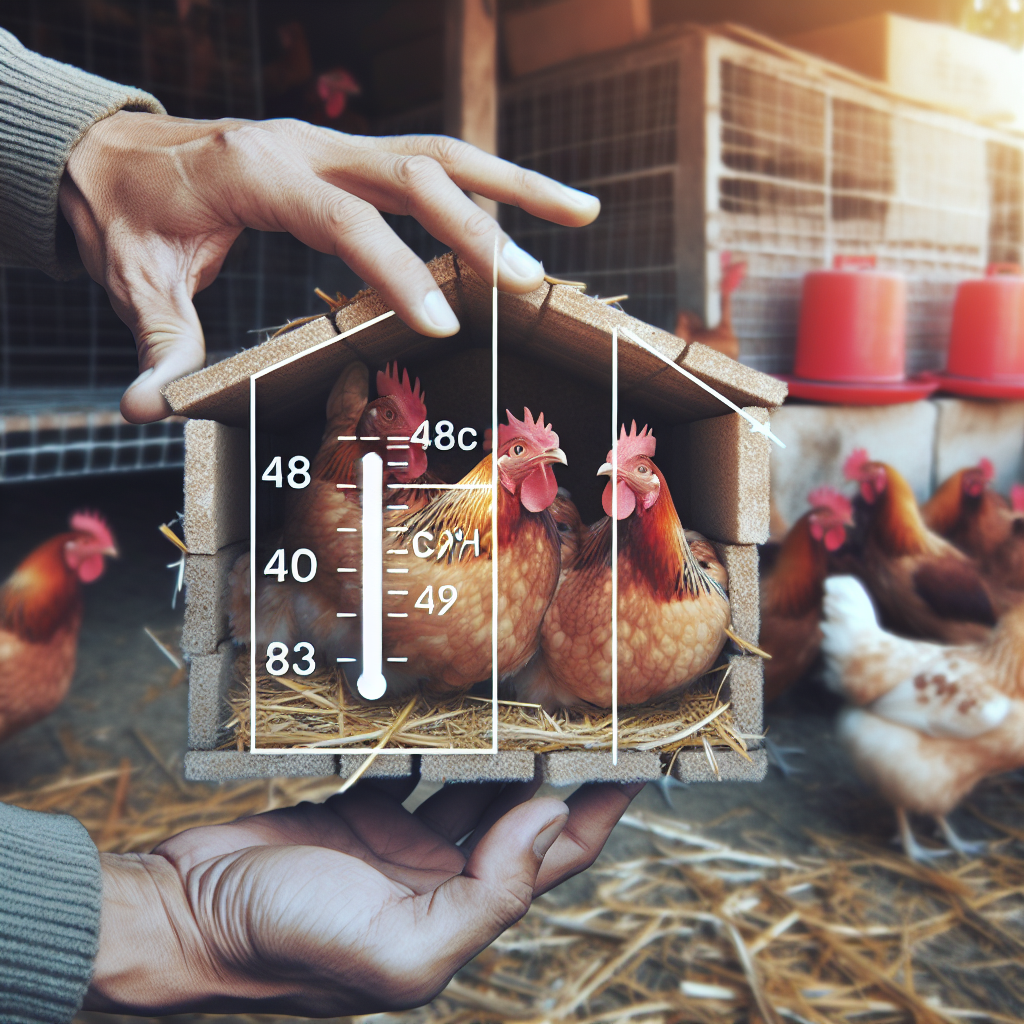Have you ever wondered how much space chickens need to live in a healthy environment? Well, worry no more! In this article, we will explore the ideal amount of space required for chickens to thrive and lead a happy and healthy life. We’ll delve into the importance of providing adequate space and explain the various factors that come into play when determining the right amount of space for your feathered friends. So let’s spread our wings and dive into the fascinating world of chicken housing!
Space Requirements for Chickens
When it comes to keeping chickens, providing them with adequate space is crucial for their overall health and well-being. Chickens are social animals that require enough space to move, roam, exercise, and exhibit natural behaviors. In this article, we will explore the different space requirements for chickens, taking into consideration factors such as free-range and confined housing, flock size, roosting space, run space, nesting boxes, feeding space, and watering space.
Minimum Space Requirements
The minimum space requirements for chickens refer to the absolute minimum amount of space needed to ensure their basic needs are met. While these requirements may vary slightly depending on breed and individual characteristics, a general guideline for minimum space allocation is around 4 square feet per chicken in the coop or sheltered housing, and an additional 8-10 square feet per chicken in the outdoor run area. This minimum space is designed to prevent overcrowding and facilitate the natural behaviors of chickens, such as foraging and dust bathing.
Factors Affecting Space Requirements
While the minimum space requirements provide a baseline for chicken housing, there are several factors that can influence the amount of space needed. These factors include the breed and size of the chickens, their age and activity level, and the climate and environmental conditions they are kept in. It is important to consider these factors when determining the appropriate space requirements for your flock, as they can greatly impact the overall health and comfort of your chickens.
Free-Range Chickens
Free-range chickens have the advantage of having access to a larger outdoor area, allowing them to exhibit natural behaviors and engage in more exercise. This type of housing system mimics the conditions of their natural habitat, where chickens have the freedom to roam, forage for food, and explore their surroundings.
Benefits of Free-Range
Free-range chickens have the benefit of a more varied diet, as they have the opportunity to supplement their feed with insects, worms, and plants found in their outdoor environment. This can lead to healthier and more nutritious eggs and meat. Additionally, free-range chickens tend to be less stressed and exhibit fewer behavioral issues, as they have more space to move and express themselves.
Space Requirements for Free-Range Chickens
To accommodate free-range chickens, a larger outdoor area is required. On average, free-range chickens should have access to at least 10 square feet of outdoor space per chicken. This allows them to roam, explore, and engage in natural behaviors without feeling overcrowded. It is important to ensure that the outdoor area is securely fenced to protect the chickens from predators and to prevent them from wandering into unsafe areas.
Confined Chickens
Confined housing refers to systems where chickens are kept primarily indoors, with limited or no access to the outdoors. This type of housing is often used in urban areas or where space is limited. While confined housing may not provide the same level of freedom and natural behaviors as free-range systems, it can still offer advantages in terms of biosecurity and protection from predators.
Advantages of Confined Housing
One of the main advantages of confined housing is increased biosecurity. By keeping chickens indoors or in enclosed spaces, the risk of exposure to diseases, parasites, and predators is significantly reduced. Additionally, confined housing allows for easier monitoring and management of the flock, making it easier to provide necessary food, water, and healthcare.
Space Requirements for Confined Chickens
In confined housing, each chicken should have a minimum of 2-3 square feet of indoor space. This ensures that they have enough room to move, stretch their wings, and access food and water. While confined housing may not offer the same amount of space as free-range systems, it is essential to provide clean bedding, proper ventilation, and enrichment to promote the well-being of confined chickens.
Size of Flock
The size of the flock also plays an important role in determining the space requirements for chickens. Whether you have a small backyard flock or a larger commercial operation, it is essential to consider the ideal flock size and allocate the appropriate space for each chicken.
Ideal Flock Size
The ideal flock size can vary depending on individual circumstances and goals. For small backyard flocks, a flock size of 4-6 chickens is often recommended, as this allows for easier management and care. Commercial operations, on the other hand, may have larger flocks that range from hundreds to thousands of chickens. It is important to consider your available space, resources, and the specific needs of your flock when determining the ideal size.
Space Requirements per Chicken based on Flock Size
To ensure the well-being of each chicken within a flock, space requirements per chicken should be adjusted based on the overall flock size. As a general guideline, a minimum of 3-4 square feet of indoor space per chicken should be provided for smaller flocks, while larger flocks may require 2-3 square feet per chicken indoors. It is important to remember that these are minimum requirements, and providing more space is always beneficial for the chickens’ health and happiness.
Roosting Space
Roosting is a natural behavior of chickens, where they perch or rest on elevated platforms during the night. Providing adequate roosting space is important for their comfort, safety, and overall well-being.
Importance of Roosting Space
Roosting allows chickens to feel safe and secure during the night, as they are elevated off the ground and away from potential nighttime predators. It also helps prevent floor eggs and keeps the coop cleaner by minimizing contact between chickens and their droppings.
Space Requirements for Roosting
To ensure sufficient roosting space, each chicken should have at least 8-10 inches of roosting perch length. The perches should be placed at a height of 2-3 feet above the ground and should be wide enough for the chickens to comfortably grip with their feet. It is important to avoid crowding the perches, as chickens prefer their own space and may become agitated if forced to share tight roosting areas.
Run Space
Run space refers to the outdoor area where chickens are allowed to roam and exercise. Providing adequate run space is essential for their physical health, mental stimulation, and overall happiness.
Importance of Run Space
Run space allows chickens to engage in natural behaviors such as scratching the ground, foraging for insects, and dust bathing. It promotes exercise and helps prevent boredom and behavioral issues that may arise from confinement. Additionally, ample run space reduces the risk of aggression and pecking order disputes within the flock.
Space Requirements for Runs
To ensure sufficient run space, each chicken should have at least 10-12 square feet of outdoor area. This allows them to move freely, explore their surroundings, and engage in natural behaviors. It is important to regularly rotate or provide fresh areas for the chickens to prevent the depletion of vegetation and minimize the risk of parasites or diseases.
Nesting Boxes
Nesting boxes are essential for hens to lay their eggs comfortably and in a clean environment. Proper space allocation for nesting boxes ensures that chickens have a suitable place to lay their eggs and reduces the risk of them laying eggs in undesirable locations.
Need for Nesting Boxes
Nesting boxes provide a secluded and comfortable area for hens to lay eggs. Without nesting boxes, chickens may choose to lay their eggs on the ground, making them vulnerable to damage or contamination. Providing nesting boxes also simplifies the collection of eggs and helps maintain better hygiene and egg quality.
Proper Space Allocation for Nesting Boxes
When allocating space for nesting boxes, a general guideline is to provide one nesting box for every 4-5 hens in the flock. Each nesting box should have dimensions of approximately 12×12 inches and be equipped with clean and soft bedding material. Placing the boxes in a quiet and dimly lit area of the coop encourages hens to use them and ensures their privacy.
Feeding Space
Providing sufficient feeding space is crucial for ensuring that chickens have access to their food without competition or stress. Adequate feeding space ensures that all chickens have equal opportunities to eat and maintain a healthy diet.
Importance of Sufficient Feeding Space
Insufficient feeding space can lead to aggression and competition among chickens, with more dominant individuals taking advantage and depriving others of food. Inadequate feeding space also increases the risk of malnutrition and can result in uneven growth, reduced egg production, or other health issues.
Space Requirements for Feeding
As a general guideline, each chicken should have at least 6 inches of linear feeding space. This means that if you have 10 chickens, your feeding area should be at least 5 feet long. Providing multiple feeding stations or spreading the feed across a larger area can further prevent overcrowding and ensure equal access to food.
Watering Space
Water is essential for the health and well-being of chickens. Ensuring sufficient watering space is important to prevent dehydration, maintain optimal hydration levels, and provide access to clean and fresh water at all times.
Importance of Sufficient Watering Space
Chickens require access to water throughout the day to meet their hydration needs and regulate their body temperature. Inadequate watering space can lead to dehydration, compromised health, and reduced egg production. Additionally, insufficient access to water can result in increased water contamination and a higher risk of disease transmission.
Space Requirements for Watering
Each chicken should have access to at least 1 inch of linear watering space. This means that if you have 10 chickens, your watering area should be at least 10 inches long. Providing multiple water sources or using nipple or cup waterers can distribute water more evenly and prevent overcrowding and spillage. It is also important to regularly clean and refill the water containers to maintain water quality and prevent the growth of harmful bacteria.
Conclusion
Providing adequate space for chickens is essential for their overall health, happiness, and well-being. Whether you opt for free-range or confined housing, it is important to consider the specific space requirements for each aspect of chicken care, including the coop, outdoor run, roosting areas, nesting boxes, feeding and watering spaces. By understanding and meeting these space requirements, you can create a healthy and comfortable environment for your chickens, allowing them to thrive and enjoy a fulfilling and natural lifestyle.




